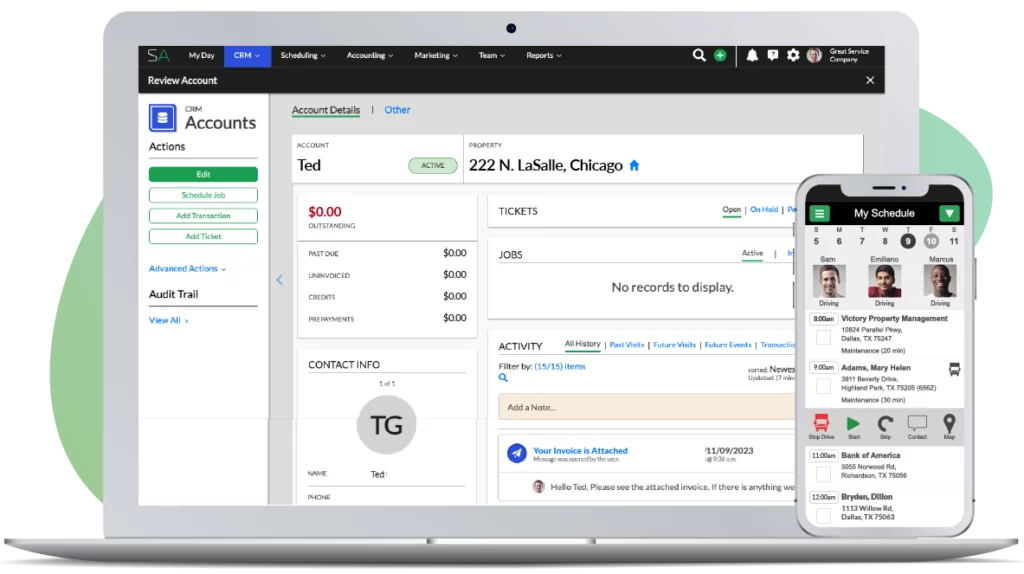WARNING: I am not proposing this is the best way to calculate fixed overhead.
Very few companies think about and figure out their overhead costs. If you have never thought about your overhead costs and how they effect your business, I propose you start somewhere.
This is the easiest way to start.
The bigger your company and the larger the projects / jobs you compete for, the more advanced your overhead calculations must become.
In this video, I give a simple example of how to calculate fixed overhead. Please keep in mind that throughout the industry, accountants, industry consultants, companies, everyone is going to have a different opinion on how this should be done. This video is not necessarily a statement from me on how I think it should be done. I’m just giving you an example. You might also Google multiple overhead recovery. It’s very common. Take a look at how multiple overhead recovery works.
The reason for making this point is, very few companies even think about overhead. A lot of the residential and smaller commercial guys get away with not thinking about overhead. It doesn’t mean they have a great business, but they get away with it and they run successfully for years. If you could imagine competing in very large commercial maintenance, large construction, or large design build where the margins are thinner in some cases, you have to know your numbers and you have to know them very, very well. To know your numbers, you absolutely must understand overhead and you must be able to calculate overhead correctly for your company.
The example I’m giving you is not the most precise way to calculate it; it’s a starting point. More than anything, it’s a way to think about some numbers that you’ve maybe never thought about in your business. This will also give you a picture of what fixed overhead costs you per man-hour when you’re selling time. In this example, it may do nothing more for you than to get you thinking and to have a new picture in your mind of how costs work within your business.
There’s two major types of overhead. There’s fixed overhead and there’s variable overhead. You can watch the videos I have that explain both. In this example, I’m focused on fixed overhead. I’m showing you how to calculate what it costs you for every hour of time you sell in overhead. Fixed overhead again, if you haven’t watched the video, are those costs that don’t really change in your business. They’re consistent from week to week, from month to month. If you don’t sell much work this week or you don’t do many jobs this week, your fixed overhead continues.
I have a number of examples of fixed overhead on my screen. Let’s put some cost to it. On a monthly basis, you spend $1,000 on rent and $75.00 on insurance. You have an admin person that costs you $2,400 a month and you have office expenses of $500.00 a month. These expenses equate to these annual costs right here. You have an estimator/sales guy/trainer that is $45,000 a year. You have what we’re going to call fixed overhead of just over $100,000 a year. Again, if tomorrow I don’t have a design build job or a maintenance job for my team to do, I don’t immediately go fire my admin person. I can’t get out of my three-year lease. The trucks I have are still accumulating depreciation. I can’t get rid of my estimator and I can’t shut off my utilities. Therefore, these are overhead costs.
A simple method to calculate your overhead cost is to look at the number of hours that you sold last year. The value of looking at the number of hours across a longer time period is that it includes seasonality. For example, if you only look at the number of hours you sold in the month of July and your overhead cost for the month of July, it might be very much skewed compared to looking at your number of hours sold in the month of December versus your overhead cost in December. Your overhead cost in December should be about what it is in July. I’m referring to fixed overhead. Your hours sold probably varies so, if you base the numbers on just one of those months, you’re going to be wrong. Therefore, you need to look at a time period that encompasses seasonality.
In my example, the simple way to calculate fixed overhead is to look at it on an hourly basis. For every hour of time we sell, how much cost do we have to build into that hour to recover the $100,000 in fixed overhead that we have as a company? If you were to look back at your numbers for the year and the amount of time that you sold, imagine that you had eight field workers. They worked on average a 40-hour week. Really, we don’t want to deal too much with averages. Let’s just say, though, for the sake of our example they worked 40 hours a week, 52 weeks a year. Obviously, this means you have zero seasonality. You would have sold 16, 640 hours.
A way to get you started would be to take your fixed overhead cost for last year, divide it by the number of hours you sold last year, and that gives you an hourly fixed overhead cost.
Remember, you’re in the business of selling time. You’re leasing out all of your employees to somebody else, whether it’s 7-Eleven who you do the maintenance for, or it’s Miss Smith down the street that you’re installing a $100,000 back yard. You’re leasing your people to her or to 7-Eleven to perform the work for them.
As you build out your cost structure for every person that you’re selling, that you’re leasing out to someone else, you need to understand all the costs that go into that person so you can sell their time accordingly. You have your base amount that you pay them. Then you have the labor burden, which is payable taxes and workers’ comp and such that’s going to add some additional amount of money. Then you have your variable costs that go into this. Then you’ve got to recover overhead for every hour of time you sell. That’s the $6.00 we came up with here. I’ve left some costs out of figuring out what this person costs you, but quickly you can see that my $14.00 an hour person, once I’ve put in labor burden and fixed overhead, it’s quickly $22.00 an hour. That’s what they’re costing me. Again, there’s plenty of cost left out of this.
You can see how impactful fixed overhead is. If you’re thinking this guy costs me $16.00 an hour and therefore I’m selling time at $30.00 a man-hour, you’re thinking you’re making $14.00 profit on that guy. That is not at all true because you’ve got all these other costs in there. In this case, the one we’re focused on, is your fixed overhead cost.
Now, one of the biggest flaws from my perspective, is that in a fast-growing business things are always changing. Remember, this is just a starting point. My fixed overhead may remain somewhat set for this next calendar year, meaning that I’ve already got the right people in place. I’ve got my office in place. I’m not going to have to add a lot more fixed overhead cost to sell more time. In the next year, I might actually end up having 14 people and do 29,000 hours and not have to increase these numbers over here. Look how much that would drive down my overhead cost. It’s down to $3.44.
This is where it starts to get more complicated. You’ve got to really figure out how to adjust this number as you progress as a company so that it’s accurate. As you get into more competitive markets, competing for bigger and bigger jobs, if you’re overstating overhead, it could be costing you business meaning you’re pricing too high. However, if you’re understating overhead, then you could be underpricing and you could be losing money. The more work you sell, the more money you lose.
I hope this makes some sense. If this is interesting to you and you see how it could help your business, I’d recommend reading about overhead, fixed overhead, the different methods to recover overhead, and really start to learn this because it will help you in your business tremendously.



2 Replies to “How To Calculate Fixed Overhead as a Per Man Hour Number”
What software program is he using in this video?
Thanks
Microsoft Excel